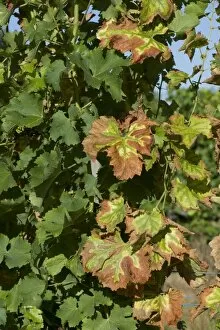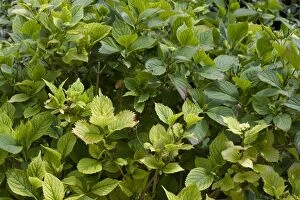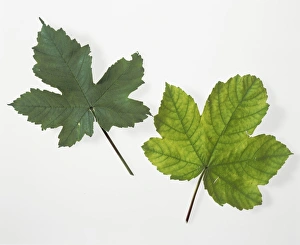Chlorosis Collection
"Unveiling the Pale Green: Exploring Chlorosis and its Effects on Plant Life" Stinging nettles, Urtica dioica
All Professionally Made to Order for Quick Shipping
"Unveiling the Pale Green: Exploring Chlorosis and its Effects on Plant Life" Stinging nettles, Urtica dioica, reveal signs of damage after treatment with glyphosate used to control them. The chlorotic leaves serve as a testament to the herbicide's impact. In the vineyards of Gironde, France, grapevines in fruit exhibit symptoms of magnesium deficiency during August. The once vibrant foliage now showcases yellowing leaves, indicating a lack of this vital nutrient. Lime-induced iron and nitrogen deficiency causes chlorosis in the lush leaves of Hydrangea macrophylla garden shrubs. The pale hue serves as an alarming reminder that proper nutrient balance is crucial for plant health. Pea plants suffering from manganese (Mn) deficiency display distinct symptoms on their leaves—pale spots and interveinal yellowing indicate a scarcity of this essential micronutrient. Etiolation takes center stage as we compare grass-covered and uncovered areas in England during April—a stark difference in growth becomes evident when plants are deprived of sunlight due to competition or shading. Leaf chlorophyll deficiency unveils itself through faded green hues—a visual representation of compromised photosynthesis and potential nutrient imbalances within various plant species. Chlorosis serves as nature's warning sign—an indication that plants are struggling to obtain necessary nutrients for healthy growth and development. By understanding these symptoms and addressing underlying deficiencies promptly, we can help restore vitality to our botanical companions.






